Rotation
Rotation is the circular movement of an object around its own axis. This movement can occur in various contexts, such as the Earth's rotation on its axis, the rotation of a wheel, or the rotation of a ceiling fan. In the context of the Earth, rotation is responsible for the cycle of day and night.
Key Concepts
- Axis: The imaginary line around which an object rotates.
- Rotational Speed: The speed at which an object rotates around its axis.
- Effects of Rotation: Rotation can result in various effects, such as the creation of day and night on Earth, changes in the apparent position of celestial objects, and the generation of centrifugal forces.
Effects of Rotation
The rotation of the Earth has several important effects:
- Day and Night: As the Earth rotates, different parts of its surface are exposed to the Sun's light, causing the cycle of day and night.
- Apparent Motion of Celestial Objects: The rotation of the Earth gives the appearance that celestial objects (such as the Sun, Moon, and stars) are moving across the sky.
- Centrifugal Forces: The rotation of the Earth generates centrifugal forces, which contribute to the Earth's equatorial bulge and affect the planet's overall shape.
Study Guide
When studying rotation, consider the following questions and concepts:
- What is the axis of rotation, and why is it important in understanding rotational movement?
- How does the rotational speed of an object affect its behavior?
- What are the practical implications of the Earth's rotation for our daily lives?
- How does rotation contribute to the creation of day and night?
- What are some examples of rotational movement in everyday life?
Understanding rotation is essential for comprehending various natural phenomena and mechanical processes. By grasping the concept of rotation, one can gain insights into the behavior of celestial bodies, the functioning of machinery, and the dynamics of the Earth's systems.
.◂Science Worksheets and Study Guides Fourth Grade. Rocks and minerals
Study Guide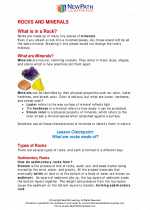 Rocks and minerals
Rocks and minerals  Activity Lesson
Activity Lesson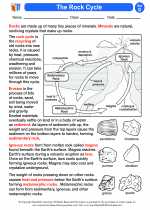 The Rock Cycle
The Rock Cycle  Worksheet/Answer key
Worksheet/Answer key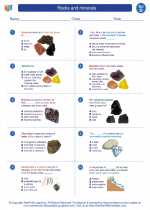 Rocks and minerals
Rocks and minerals  Worksheet/Answer key
Worksheet/Answer key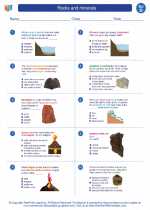 Rocks and minerals
Rocks and minerals  Worksheet/Answer key
Worksheet/Answer key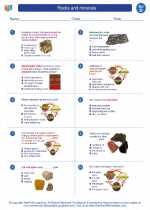 Rocks and minerals
Rocks and minerals  Worksheet/Answer key
Worksheet/Answer key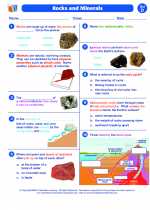 Rocks and Minerals
Rocks and Minerals  Vocabulary/Answer key
Vocabulary/Answer key Rocks and minerals
Rocks and minerals  Vocabulary/Answer key
Vocabulary/Answer key Rocks and minerals
Rocks and minerals  Vocabulary/Answer key
Vocabulary/Answer key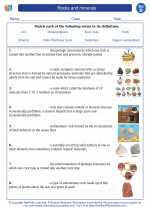 Rocks and minerals
Rocks and minerals  Vocabulary/Answer key
Vocabulary/Answer key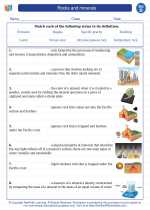 Rocks and minerals
Rocks and minerals 

 Activity Lesson
Activity Lesson
 Worksheet/Answer key
Worksheet/Answer key
 Worksheet/Answer key
Worksheet/Answer key
 Worksheet/Answer key
Worksheet/Answer key
 Worksheet/Answer key
Worksheet/Answer key
 Vocabulary/Answer key
Vocabulary/Answer key
 Vocabulary/Answer key
Vocabulary/Answer key
 Vocabulary/Answer key
Vocabulary/Answer key
 Vocabulary/Answer key
Vocabulary/Answer key

The resources above cover the following skills:
Concepts of Earth Science (SD1, SD2, SD3, SD4)
The student demonstrates an understanding of geochemical cycles by describing that most smaller rocks come from the breaking and weathering of larger rocks as part of the rock cycle.
The student demonstrates an understanding of geochemical cycles by recognizing the physical properties of water as they relate to the rock cycle.